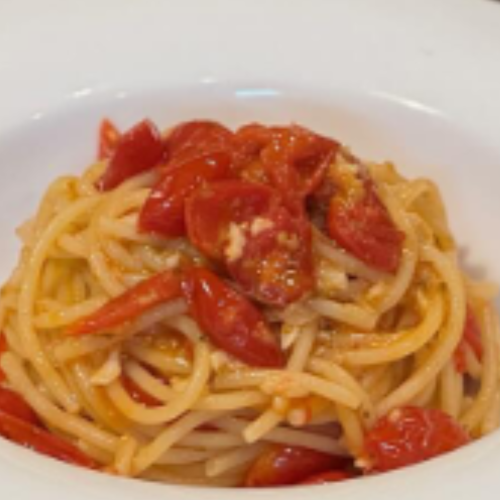Step 1: Cook the Pasta
Boil Water: In a large pot, bring salted water to a boil. Use about 1 tablespoon of salt for every 4 liters (1 gallon) of water.
Cook Pasta: Add the pasta to the boiling water and cook according to package instructions until al dente (usually about 8-10 minutes). Stir occasionally to prevent sticking.
Step 2: Prepare the Sauce
Sauté Garlic: While the pasta is cooking, heat the olive oil in a skillet over medium heat. Add the minced garlic and sauté for about 1-2 minutes until fragrant but not browned.
Add Tomatoes: Toss in the diced tomatoes, salt, black pepper, and red pepper flakes (if using). Cook for about 10 minutes, stirring occasionally until the tomatoes break down and create a sauce.
Add Basil: Stir in the torn basil leaves just before removing the sauce from the heat. This will keep the flavor fresh and vibrant.
Step 3: Combine Pasta and Sauce
Drain Pasta: Once the pasta is cooked, reserve about 1 cup of the pasta cooking water, then drain the pasta in a colander.
Mix Together: Add the drained pasta directly to the skillet with the sauce. Toss well to combine, adding a little reserved pasta water if the sauce is too thick.
Tips and Variations
Vegetarian/Vegan: This dish is naturally vegetarian and can easily be made vegan by omitting cheese or using a plant-based alternative.
Gluten-Free Option: Use gluten-free pasta, and ensure the other ingredients (like the olive oil and tomatoes) are certified gluten-free.
Extra Flavor: For a richer flavor, try adding a splash of balsamic vinegar or a teaspoon of sugar to balance the acidity of the tomatoes.
